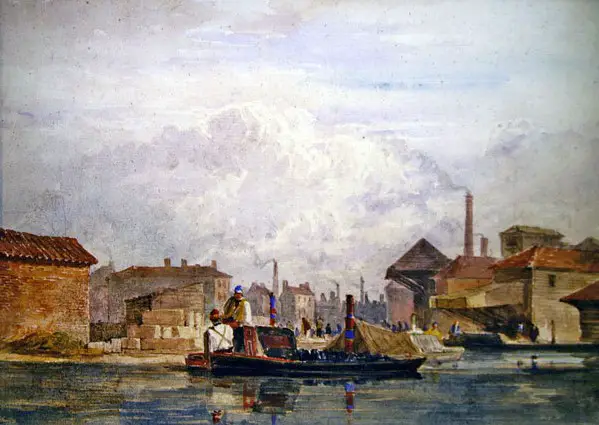In view of my Norton connection on my Mothers side and my involvement with the Crescent Theatre when I lived in Birmingham I researched the area and came up with the following from a variety of sources, hope it helps?
The Crescent
In 1790 an ambitious scheme had been begun between Cambridge Street and the canal which was to have consisted of a crescent of 23 stone-fronted houses, designed by John Rawsthorne and built by Charles Norton Three years later only the flanking wings had been completed and the project was said to have failed because of the depression caused by the French wars. The five houses which remain, representing the east wing, were converted into the original Crescent Theatre, their rather plain stone facades having been preserved intact. In the 19th century this area rapidly became unsuitable for residential development owing to the concentration of industry along the canal. A half-derelict survival of its earlier phase is in Kingston Row, a street formerly crossing the canal.
NB Another version of the above detailed on a 1962 Street Map reads.
Charles Norton designed a crescent of houses in 1778.
History of the Crescent Theatre
The Crescent originated in December 1923 when City Council employees entertained their colleagues with a Christmas party revue. They also had ambition - to raise the funds to acquire their own theatre. Plans were made at a meeting on 30th January 1924 and the Municipal Players were in business. For the next seven years plays were mounted in the Council House canteen and at the Midland Institute while fund-raising progressed. In 1931 the opportunity came to lease premises at Nos. 17, 18 and 19 The Crescent, together with the derelict Baskerville Hall behind. The Players converted the decaying buildings into a theatre with raked auditorium, stage, dressing rooms and workshops and this opened with much national and local press publicity in April 1932.
The company now included members not in the employ of the Council and enjoyed success until the outbreak of war in 1939 when Government restrictions closed theatres. Restrictions were relaxed in 1940 and despite the blackout and air raids the theatre remained open, intending to help the war effort. A decision was taken that the Crescent should become the City’s Garrison Theatre, solely for the entertainment of troops and auxiliary services. Fitting in rehearsals and performances between daily work and voluntary Civil Defence duties, the depleted Company embarked on a programme of revues, comedies and chiller/thrillers until the end of hostilities. During the next ten years the theatre developed & extended, plans were made to double the size of the auditorium; all was set for expansion when the Council dealt a stunning blow. The land was needed for development and the Company was given notice to quit. This time there was no question of a member’s’ D-I-Y job. With the theatre’s capital now fairly substantial the Board opted for a purpose-built theatre. The Council offered a site in Cumberland Street and an interest-free loan. Ownership of the building was vested in The Crescent Theatre (New Building) Trust Ltd and a limited company formed to run the theatre.
That building (our previous home) opened in October 1964, with its revolutionary design of the revolving auditorium/stage, but minus the top storey, costs had risen and the money ran out but the flexible staging gave greater scope to designers and directors and the building was in great demand from other companies wishing to hire it.
In the late 1980s history appeared to repeat itself as the Council disposed of the ground lease to developers and the theatre’s 1960s architecture did not fit in the with the proposed prestigious scheme. The Company once more faced the prospect of losing its home. After long and delicate negotiations, the developers, Brindleyplace plc, agreed to finance a new building on a canal-side site fronting onto Sheepcote Street (our present home).









